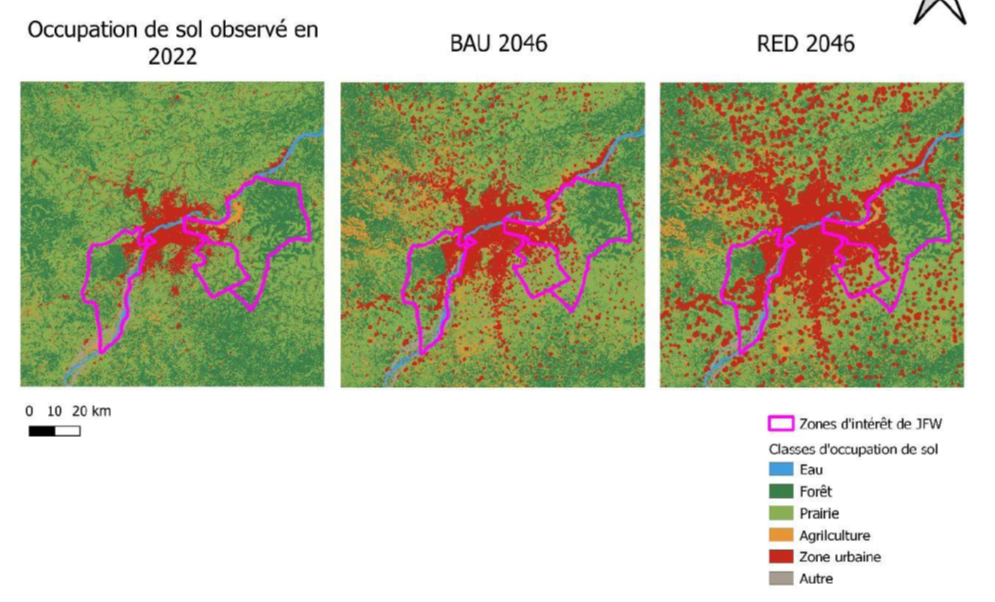MALI – The way we use our land has an immense impact on the benefits we can withdraw from its ecosystems. Around 46% of the Earth’s habitable land is used for agriculture (crops and livestock), while 38% is covered in forest and only 1.4% is freshwater (lakes, rivers).* To help us understand the impact of land use change in Mali, we worked together with students at the Université de Liège (Belgium) on a research project.
Ecosystems provide multiple benefits such as food production, water provision and infiltration, climate regulation, biodiversity, and touristic value. However, modifying land to optimise only one benefit (e.g., food production) often leads to losing valuable others (e.g., biodiversity, carbon storage). Therefore, it is important to understand how land use has changed over time, and how these changes impact on the benefits ecosystems can provide to people, called ecosystem services. In many places around the world, and especially in the Global South, there is a serious lack of good (spatial) data to help us understand these changes. Yet, it is usually in these same places that the largest land use changes are expected in the future. For example, today about half of the world’s population lives in urban areas, and according to the UN that percentage is expected to increase to almost 70% by 2050. This population growth is expected to be situated almost entirely in Africa and Asia.
Growing pressure on water resources
Join For Water and its partners across the world have experienced the challenges that come with population growth and land use change. The city of Bamako in Mali, for example, is growing very fast, which leads to an enormous pressure on the surrounding water resources and ecosystems. Join For Water supported a group of students from the Université de Liège from Belgium in a research project on the impact of urbanisation and land use change in Bamako, Mali. The students developed a predictive model for land use change in the region around Bamako, and then did a first analysis on the impact of these changes on water-related ecosystem services. They developed two scenarios: one where the urbanisation rate continues as it did during the previous decade (Business as usual, BAU), and another with more rapid economic development (RED). In the maps below you can see the current land use, and the land use in both scenarios. As can be observed on the maps, the type of scenario greatly impacts how fast the urban area expands and thus how fast other ecosystems may disappear.
Scenarios and their impact
As part of the project, a user manual was produced which will be taken up by our research partners in Mali, who can further develop the methodology and refine the scenarios and their impact on ecosystem services. This type of information is crucial to better understand the impact of (a lack of) protection measures and can be used to prioritise key areas for conservation. This work can also be used to support policy recommendations.
* https://ourworldindata.org/land-use


